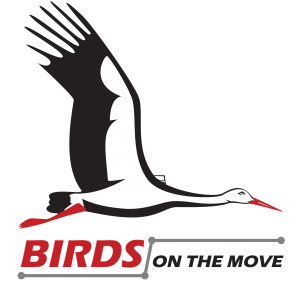BIRDS ON THE MOVE
adaptive migratory behaviour in response to global environmental change
2018 - 2021

Summary
Migratory habits of birds can be rapidly altered under the influence of selection, continually shaped and re-shaped in response to changing environmental conditions. A myriad of migration strategies can coexist within a broad range of species and the associated trade-offs and fitness consequences of diverse strategies and how they persist are pertinent questions in migration research.
White storks used to be wholly migratory in Europe but recently increasing numbers of individuals started wintering in their Iberian breeding grounds. These resident birds rely almost exclusively on the guaranteed, abundant anthropogenic food supply from landfills and benefit from milder European winter temperatures. Consequently, the number of wintering storks in Portugal has increased significantly from approximately 1.180 individuals in 1995 to over 14.435 in 2015. Feeding on abundant and predictable anthropogenic food subsidies (PAFS) allows scavengers to decrease required foraging times and ranges and improves breeding performance and survival. Nonetheless, relying on PAFS can also have detrimental impacts that have been poorly investigated; birds get exposed to contaminants and pathogens and can spread diseases, increasing human-wildlife conflicts. Overall, such changes may have unpredictable short-and long-term effects on species, ecological processes, and the incidence of human-wildlife conflict. Following new EU directives, open-air landfills are being replaced by facilities inaccessible to birds, leading to a dramatic reduction in food availability that may impact individual migratory decisions. Such a study system provides a unique opportunity to quantify the causes and consequences of partial migration and will provide essential knowledge for predicting to what extent and how fast birds could adapt to environmental change.
Objectives
(1) Quantify fitness trade-offs of partial migration by assessing how a specific migratory strategy (migrants versus residents) affects movement behaviour, reproductive performance, and annual survival rates of WS;
(2) Determine the impacts of predictable anthropogenic food subsidies (PAFS) on foraging strategies, breeding success and juvenile survival of WS;
(3) Determine the impact of PAFS and migratory behaviour on the potential role of WS as disease vector in the context of One Health;
(4) Identify the mechanisms driving changes in migratory behaviour of WS in response to environmental change (dramatic reduction in winter food availability);
(5) Investigate the impacts of the shift in migratory behaviour in population structure and evaluate a potential genetic basis underlying this shift;
(6) Test the mechanisms underlying the initiation of migratory behaviour in juveniles;
(7) Model the overall fitness consequences of migration and residency under future environmental changes.
Project team
Project Coordinator:
Research Center in Biodiversity and Genetic Resources (CIBIO-InBIO), Portugal.

Project Partners:
University of East Anglia (UEA), United Kingdom.
British Trust for Ornitology (BTO), United Kingdom.
University of Castilla-La Mancha (UCLM), Spain.

Funders
FCT reference: PTDC/BIA-ECO/28176/2

